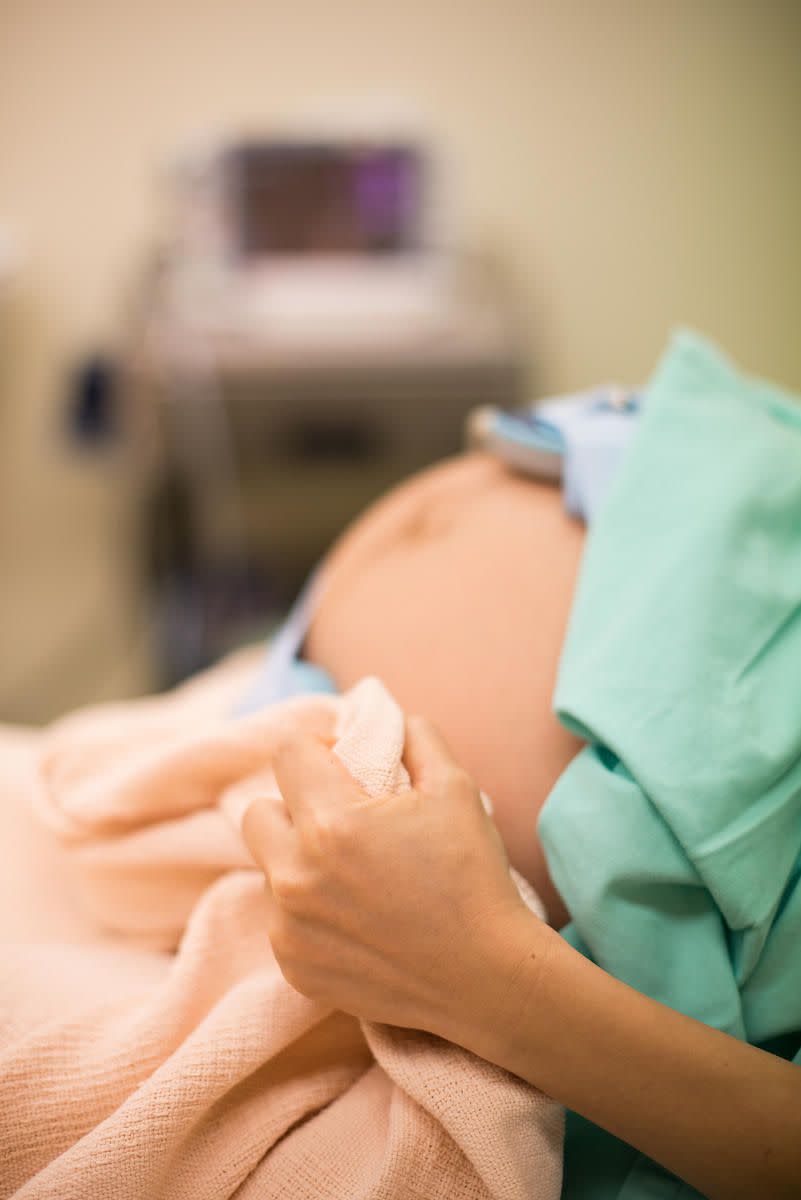Is Episiotomy or Tearing During Labor Worse?
Our labor nurse weighs in on whether tearing during childbirth or having an episiotomy is worse.

When parents make a birth plan, one of the most popular items is No episiotomy under any circumstances. An episiotomy is an incision in the perineum (the skin, tissue, and muscle between your vagina and rectum) to enlarge the vaginal opening and prevent spontaneous tearing.
But are episiotomies always worse than tearing? Read on to learn when one may be better than the other.
Related:
Episiotomy Is Often Over-Used
People have good reasons behind their desire to avoid episiotomy: A May 2019 analysis from USA Today found that episiotomies happen more often than necessary and that people suffer long-term health consequences.
According to the report, national guidelines in 2006 state that only emergencies, like a baby with shoulders too large to fit through the vagina, require an episiotomy. Predictably, then, episiotomies should occur pretty infrequently.
However, USA Today spent four years analyzing nearly 240,000 people who had recently given birth and found episiotomies occurred at rates of 20% or higher in dozens of hospitals. The authors found that the highest rates included large metropolitan hospitals, mid-sized hospitals in suburban areas, and small facilities in rural communities.
What causes the high number of episiotomies? According to USA Today, doctors claim outdated medical practices and a desire for speedy births are the culprits.
Episiotomy Pros and Cons
Episiotomies are surgical incisions and are painful to recover from. You may experience discomfort from an episiotomy for weeks or even months afterward. In addition, USA Today further reports that unnecessary episiotomies can lead to severe health consequences, including:
Deep lacerations into the anal sphincter
Infections
Surgical repair of the area
So, when overused, episiotomies have a lot of downsides, which is why the American College of Obstetricians and Gynecologists (ACOG) recommends against routine episiotomy.
But they're not always entirely unwarranted. Sometimes episiotomies are necessary, like in a medical emergency, for example, fetal distress or to prevent a large tear. An episiotomy can save precious time or prevent more significant damage in these cases.
Tearing Is Common
According to ACOG, lacerations occur 53-79% of the time during childbirth. Most do not result in bad functional outcomes. However, using perineal massage and a warm compress during birth can reduce the likelihood of tearing.
First and second degree tears
Tearing is graded as first- through fourth-degree. This grading is applied whether your laceration occurs as a result of natural tearing or from an episiotomy.
First-degree is a tearing of the surface layer of skin only. Second-degree lacerations involve the underlying perineal tissue.
Both first- and second-degree tears are pretty easy to stitch up, and you'll be good as new within a month or so. Most perineal tears fall into these categories.
Third and fourth degree tears
A third-degree tear involves the anal sphincter; a fourth-degree involves the anal sphincter and rectal mucosal tissue. Third- and fourth-degree tears are bad news and require a lot of skill and needlework to repair. These severe lacerations are called obstetric anal sphincter injuries (OASIS). They can result in fecal incontinence.
Related:
Tearing Pros and Cons
The upside of tearing is that tears tend to be more often surface layer injuries than episiotomies. Sometimes, tears are so minor, they don't require repair, which means you won't feel the discomfort of stitches on your perineum as you heal from childbirth.
On the downside, some tears can be severe, extending into the anal sphincter, resulting in fecal incontinence, and requiring surgical repair.
Which Is Worse: Episiotomy or Tearing?
Overall, episiotomy is not recommended routinely. Therefore, tearing is generally preferred unless complications indicate an episiotomy is medically warranted. In addition, tears are most often minor, sometimes not even requiring repair. So, you may have an easier time with recovery if you have a tear than an episiotomy.
Whether you have an episiotomy or a tear, a health care provider will numb the area with a local anesthetic and stitch it closed if you require a repair. They often use dissolvable stitches, so you don't have to remove them. During your postpartum checkups, a health care provider will examine the area to ensure the laceration is healing correctly and that there are no signs of infection.
Related:

